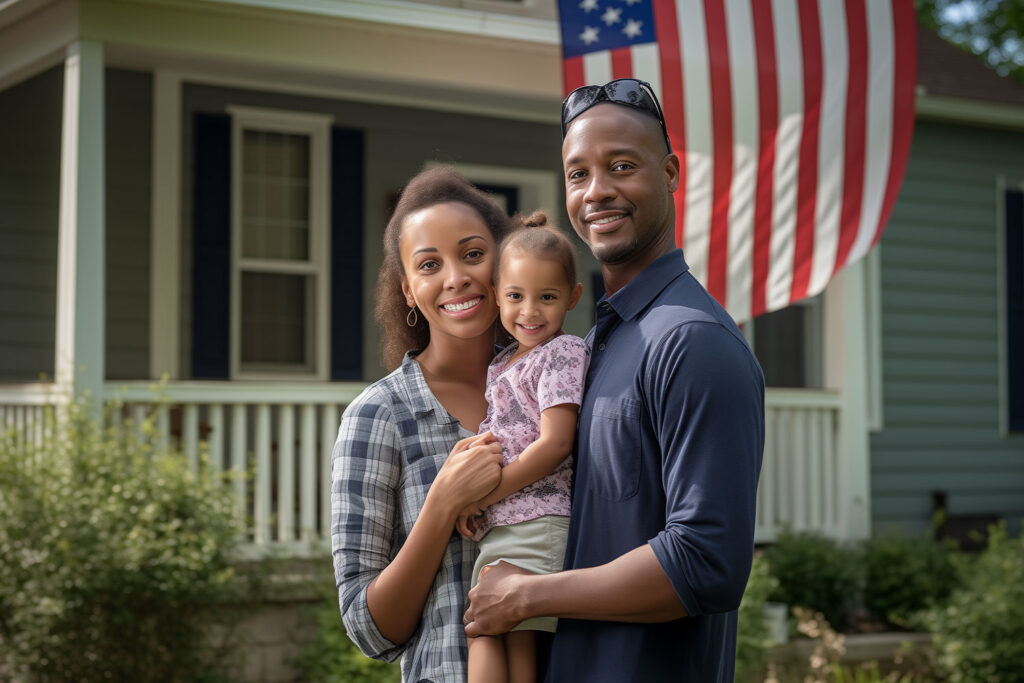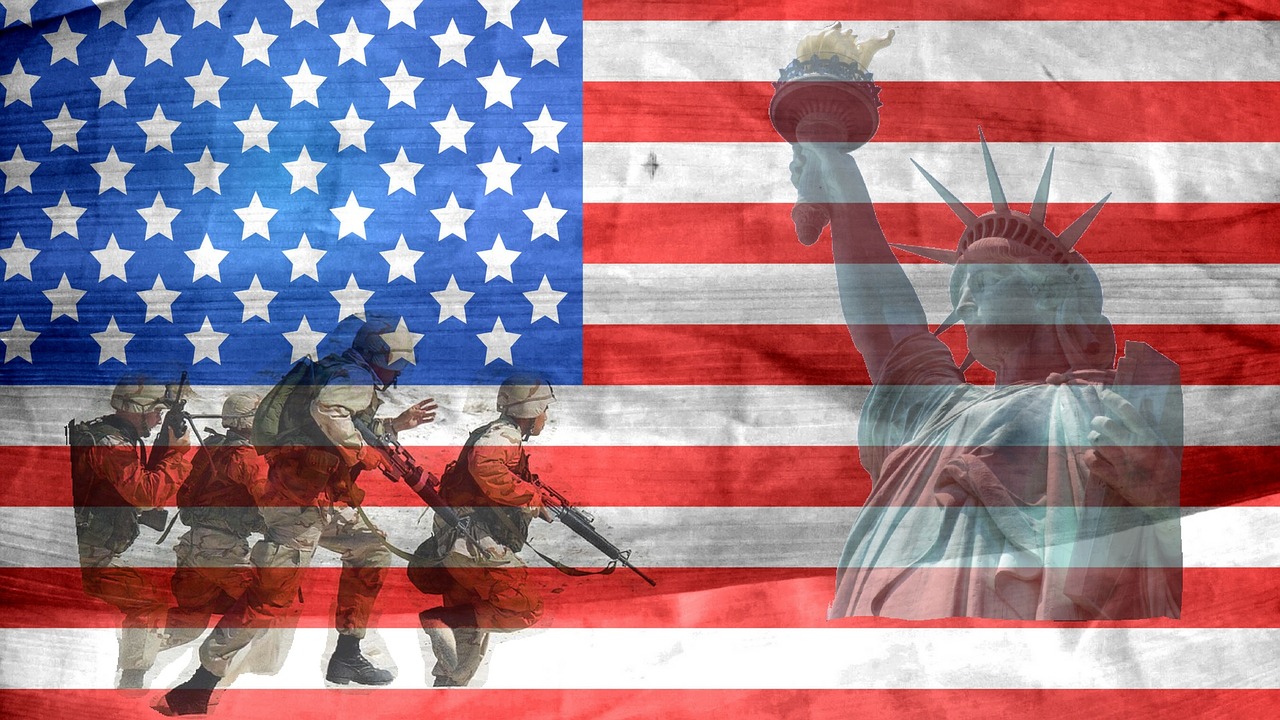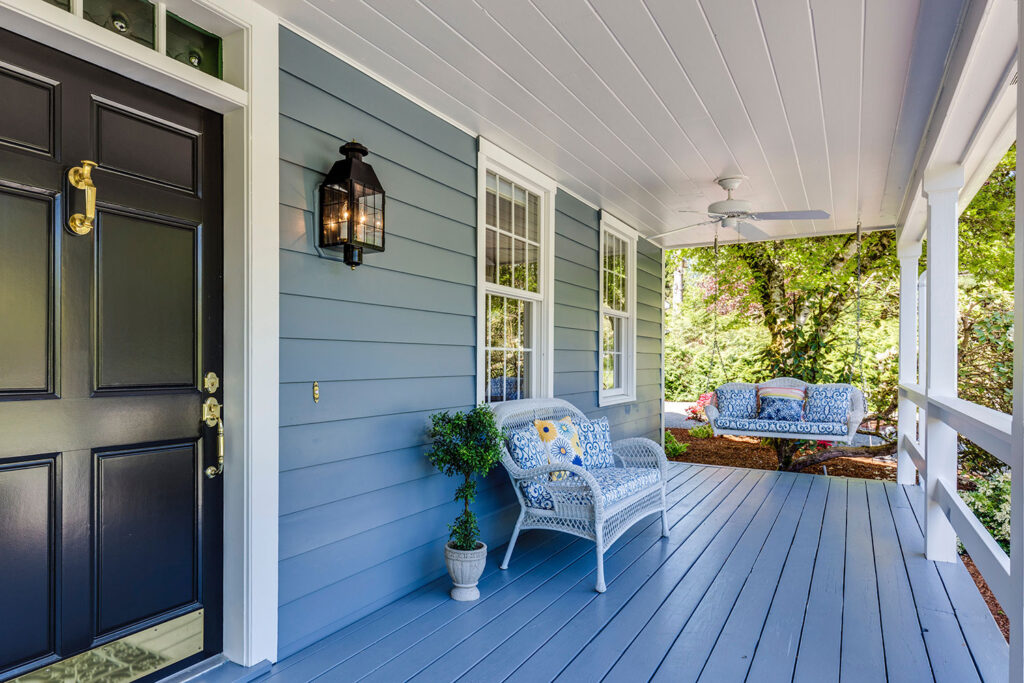The United States Department of Veterans Affairs (VA) provides home loans specifically for military veterans. These VA home loans generally help each veteran secure safe and affordable housing with lower interest rates, closing costs, and down payments compared to a conventional loan. The VA home loan benefit includes a few loan program options to suit each service member or veteran's situation.
4 Types of VA Home Loans
- VA-Backed Purchase Loan
- Cash-Out Refinance Loan
- Interest Rate Reduction Refinance Loan (IRRRL)
- Native American Direct Loan (NADL)
The VA home loan program helps military service members, veterans, and some military spouses buy a home. The program was created in the 1940s to help military service members returning home from World War II purchase homes for themselves and their families. Now, it's used for any qualifying military member. These loans are designed to help a veteran or service member who may have little money to spare for a down payment or who doesn't have the excellent credit often needed to buy a home.
👉 Truss Financial Group offers VA loans to non-traditional borrowers. Get started today!
Different types of VA home loan options allow military members to get a VA loan that works for their purchasing needs. For example, an interest rate reduction refinance loan (IRRRL) can help veterans who already have a home loan from the VA refinance their loan for a better rate to make their housing payments more affordable.
What’s the Difference Between a VA Direct Loan and VA Backed Loan?

The VA home loan program offers two types of loans: a VA direct loan and a VA-backed loan. The VA direct loan is only available as the Native American Direct Loan (NADL), while VA-backed loans include a VA-backed purchase loan, cash-out refinance loan, and interest rate reduction refinance loan (IRRRL).
Both loan types can beat out some of the best mortgage lenders and their private loan terms, which may have higher interest rates and stricter eligibility requirements than VA home loans. A private lender may also require private mortgage insurance when a home buyer makes less than a 20% down payment. Mortgage insurance increases the monthly cost of a mortgage.
A VA direct loan and a VA-backed loan have some important differences for home buyers to be aware of. Let's look at how the two types of loans compare.
VA Direct Loan
The only VA direct loan is the NADL, which is solely for Native American veterans or the spouse of a Native American veteran. A VA Direct Loan comes straight from the Veterans Administration, which acts as the mortgage lender. You won't go through a private lender with this VA loan program, as the VA manages, oversees, and collects payments from your loan.
In most cases, this loan has a lower down payment, closing costs, and annual percentage rate than a conventional mortgage. Additionally, borrowers won't need to pay private mortgage insurance that increases their monthly payments.
VA-Backed Loan
A VA-Backed Loan offers many of the same benefits as a VA Direct Loan, including not requiring private mortgage insurance and requiring a minimal or no down payment.
The key difference between these VA loan benefit programs is that a VA-Backed Loan is guaranteed by the VA rather than furnished by the VA directly. In other words, to get a VA-Backed Loan, a borrower applies for a mortgage with a VA-partnered lender. The VA assumes some of the risks of borrowing by promising to pay some of the purchase loan if the borrower defaults on their monthly payment.
Therefore, veteran borrowers must meet the eligibility requirements of both the VA lender and the VA before getting a loan through the VA loan program. In contrast, a borrower would only need to meet the VA's requirements for a VA Direct Loan.
4 Types of VA Loans

The following are the types of mortgage loans the VA offers service members and veterans who qualify.
1. VA-Backed Purchase Loan
The VA-backed purchase loan is the most common type of VA home loan. These loans come backed by the VA, but applicants must apply through a regular lender that partners with the VA.
What It Is
A VA-backed purchase loan gets its name because the VA guarantees the lender that it will pay if the borrower defaults on their loan. Because of the VA backing, lenders may be a bit more lenient on a borrower regarding typical mortgage requirements.
Usually, these loans give lower mortgage rates than traditional loans and have little to no down payment requirements. Borrowers also will not need to pay mortgage insurance, even if they don't make a down payment.
Who It's Best For
Veterans or service members who want to make a small or no down payment can benefit from using this loan program. There are also fewer costs associated with these loans overall than conventional loans, which could make buying a home more affordable and easier to qualify for eligible homebuyers.
Eligibility for VA-Backed Purchase Loan
To apply for a VA-backed purchase loan, borrowers must first be eligible for a Certificate of Eligibility (CoE) based on their time in the service or have had an eligible discharge from the service, such as a hardship or early-out discharge. Borrowers must also live in the home they buy with the loan and meet all requirements from the lender and the VA for their loan amount.
Usage Rules
The VA allows veterans and service members to use their VA-backed purchase loan in a few ways. The most common use is for buying a single-family residential home, but the loan can also go toward building a home, buying and renovating a home, or adding new features to improve the home's efficiency. Eligible borrowers may also seek another VA home loan if they want to sell their current home and buy a new one.
Additional Information About VA-Backed Purchase Loans
A VA home loan includes a VA funding fee, which is in addition to the closing costs for the mortgage. The funding fee is a one-time payment that borrowers can either pay at the time of closing or finance throughout the life of the loan. The purpose of this fee is to offset some of the costs of VA home loans to taxpayers.
You can lower the VA funding fee by making a higher down payment on your purchase loan. Down payments of 10% or higher have the lowest funding fee at a 1.4% rate. For borrowers using a VA home loan a second time and making a down payment of less than 5%, the highest rate applies at 3.6% of the loan.
2. Cash-Out Refinance Loan
A cash-out refinance loan is one type of VA-backed loan that's specifically designed to help borrowers refinance their current mortgage loan.
What It Is
A cash-out refinance loan from the VA works similarly to a VA-backed purchase loan, except that the loan goes toward refinancing a current home rather than buying a new home. Veterans and service members can use the loan to replace their mortgage if they're seeking better terms, want to switch lenders, or want to take advantage of using their home equity for a large purchase or debt payment.
Who It's Best For
This loan is best for individuals who already have a home loan – whether a VA mortgage or conventional mortgage – and are looking for a better interest rate for the life of their loan. This loan type also allows borrowers to cash out on their home equity, rolling it into their mortgage loan to help pay debts or improve their homes.
For borrowers who do not currently have a VA mortgage, a cash-out refinance loan can be beneficial for lowering interest rates and getting a lower monthly payment. Borrowers may also be able to drop their private mortgage insurance from their lender with a VA refinance loan.
Eligibility for Cash-Out Refinance Loan
Cash-out refinance loan applicants must already have a home with a mortgage through a private lender or the VA home loan program.
Like the VA purchase loan, a cash-out refinance loan requires a borrower to have a CoE showing their eligibility for the VA home loan program. Fill out the VA form via your eBenefits account to request a CoE if you don't currently have one. Additionally, borrowers must meet all requirements from the lender and the VA to refinance their homes and live in the home they're refinancing.
Usage Rules
You can choose to make no down payment on your refinance loan, but you may only be able to borrow up to a certain limit by doing so. With a down payment on your loan, these restrictions may be lifted. Your loan will go toward paying off and refinancing your current mortgage loan but depending on how much equity you have in your home, you can borrow more than the amount you owe to use for any reason.
Additional Information About Cash-Out Refinance Loans
With a cash-out refinance loan, you'll need to pay closing costs just like you would with your original mortgage. The amount you pay depends on the amount of the loan and the value of your home. If you don't have enough cash or savings to pay for closing costs when it's time to sign off on your loan, it's best to wait to refinance.
3. Interest Rate Reduction Refinance Loan (IRRRL)
Borrowers looking for a reduced interest rate on their current VA-backed loan can choose the IRRRL program to save money on their monthly mortgage payments.
What It Is
The IRRRL program is similar to the cash-out refinance loan program in that it's designed to lower your payments by providing you with a better interest rate than your original loan. However, unlike the cash-out refinance loan, this VA home loan is only for VA-backed loans rather than any type of mortgage you want to refinance. In addition, borrowers will not be able to “cash out” on their refinanced loan, meaning that they can't borrow more than what they owe on their current loan.
Who It's Best For
Homeowners with a VA-backed home loan can choose IRRRL to get lower monthly payments because of a reduced interest rate compared to their current loan. This can also be a good way to switch from a variable to a fixed interest rate to have potential savings over the life of a loan.
The IRRRL process is also relatively straightforward compared to other refinance options because it doesn't require approval for an additional borrowing amount and focuses only on VA home loans. Therefore, borrowers looking for a simple refinancing process might choose this loan.
Eligibility for IRRRL
IRRRL participants must already have a VA-backed home loan that they'd like to refinance. Because they've already been certified through the VA to obtain their first loan, they do not have to furnish a CoE to get approved.
Borrowers can also have a second mortgage and get approved for IRRRL. However, the VA requires second lien holders to agree to make your IRRRL mortgage the primary mortgage on your home. If your second lien holder disagrees, you will not be able to refinance with IRRRL.
Usage Rules
IRRRL borrowers can use the program to refinance their loans more than once, but they must wait at least 210 days between requests for a new loan. The VA must also determine that the refinancing would benefit you by significantly lowering your interest rate and/or monthly payment.
Additional Information About IRRRLs
Unlike other VA home loan options, the IRRRL program doesn't require borrowers to be living in the home they want to refinance. Instead, you must prove that you used to live at the residence but still own the home. Therefore, renting the home you'd like to refinance or using it as a secondary home is acceptable with this program.
4. Native American Direct Loan (NADL)
The NADL is the VA's one direct loan program, offering benefits for Native American veterans and their spouses.
What It Is
The NADL furnishes loans directly from the VA as a purchase loan for a home or as a loan for improving or building a home on federal trust land.
Like other VA home loan programs, the NADL loan does not require a down payment on most loans and typically has better terms and benefits than a conventional loan. For instance, borrowers can usually have lower closing costs and a fixed or guaranteed rate for a 30-year mortgage.
Who It's Best For
Native American veterans or their spouses might consider an NADL loan over other VA home loan types if they want to purchase, build, or improve a home on eligible land.
Because it's a direct loan program, this loan offers additional benefits over other home loan types for veterans. For instance, borrowers receive their loan from the VA, so the qualification requirements are usually less stringent compared to a private lender mortgage. Borrowers also can usually get a loan with no down payment and no requirement for private mortgage insurance.
Eligibility for NADL
The NADL loan is only for Native American veterans or spouses of Native American veterans, so this is the most important prerequisite for qualification. Additionally, borrowers must have a tribal government with a Memorandum of Understanding (MoU) agreement with the VA plus a CoE of their own.
Because the loan comes straight from the VA, borrowers must meet VA eligibility in terms of credit, purchasing power, and housing standards. The home must also be the borrower's residence.
Usage Rules
NADL loans are usually given as a home purchase loan, but the VA also allows them to finance improvements on an eligible home or to build on eligible federal land. Borrowers may also refinance a current NADL loan using a new NADL loan, but some closing costs may apply.
Additional Information About NADL
The NADL program allows borrowers to use the NADL loan more than once. A veteran might use their first loan to build a home on federal trust land and then refinance their loan with another NADL loan ten years later to get a better interest rate and monthly payment.
Borrowers should be aware that there is no option for an adjustable mortgage rate or shorter mortgage terms with a NADL. Instead, the VA requires a 30-year fixed mortgage starting with a 5% interest rate. Some borrowers may have a higher interest rate based on their creditworthiness.
VA Home Loan Requirements

Depending on the VA home loan you choose, requirements will vary. Below are some general specifications for veterans or service members who want to participate in the VA home loan program.
Who Can Apply
Veterans or service members may apply for a home loan if they meet the VA's service requirements. In most cases, a service member must have served for at least 90 total days, although the dates they served and their reasons for discharge make a difference. Members of the National Guard and Reserve can also qualify if they've served on active duty for at least 90 days.
Additionally, anyone applying should seek a CoE from the VA which shows that they meet these minimum requirements and are eligible to use the VA home loan benefit.
Eligible Properties
The types of properties you can use your VA home loan for depend on the type of loan. In most cases, borrowers must be living in the home in which they're funding with the loan. However, borrowers must be purchasing a qualifying residential home, like a condominium, a single-family home, a modular home, or a new build.
VA Home Loan Limitations
The VA used to have limitations on loans over $144,000. However, in 2020, the agency dropped these limitations for anyone with full entitlement, allowing veterans and service members more flexibility with their financing. Fully entitled borrowers must either have never used their VA home loan benefit, have paid off a home with a VA loan and sold the property, or have had a foreclosure but repaid their benefit.
Still, borrowers must qualify for the lender's and VA's other requirements regarding their credit score, credit history, credit card and other debts, and income to get approved.
How To Apply for a VA Home Loan
If you're interested in getting a loan from the Veterans Administration, you should start by obtaining a Certificate of Eligibility (CoE). Once you receive a CoE, you can work with a lender to begin the mortgage application process. First, lenders will typically prequalify you based on preliminary paperwork and an application. Then, you'll need a VA appraisal on the home. This helps the lender determine whether the amount you need to finance is acceptable based on the home's value.
If accepted, you'll move on to the full mortgage application process, which usually entails more paperwork, credit checks, and a more detailed review of your finances. Your lender will work with the VA to ensure that all VA-related documentation for your loan is complete.
If you have any questions or concerns at any point in the process, your lender will be able to assist you.
What to Know About VA Home Loan Options
A VA home loan is one of many benefits that service members and veterans can receive as a thank you for their time in the service. The VA home loan program can make it easier for veterans to qualify for purchasing, improving, or refinancing their homes compared to traditional mortgages from private lenders.
However, it's important to remember that VA purchase loans work through regular lenders, too, like Rocket Mortgage or Bank of America. Therefore, borrowers must meet the lender's requirements before getting approved, such as having a good to excellent credit score and having enough income to support the mortgage. Still, lenders may relax some requirements based on the VA's guarantee of the loan.
Veterans and service members interested in pursuing a home loan through the Department of Veterans Affairs home loan program should first obtain a CoE showing that they are eligible for the program. Then, apply for a mortgage through your chosen lender, who will work with the VA to approve you for a loan. Veterans may sometimes pay a fee to their lender if they apply for a VA home loan.
👉 Truss Financial Group offers VA loans to non-traditional borrowers. Get started today!






